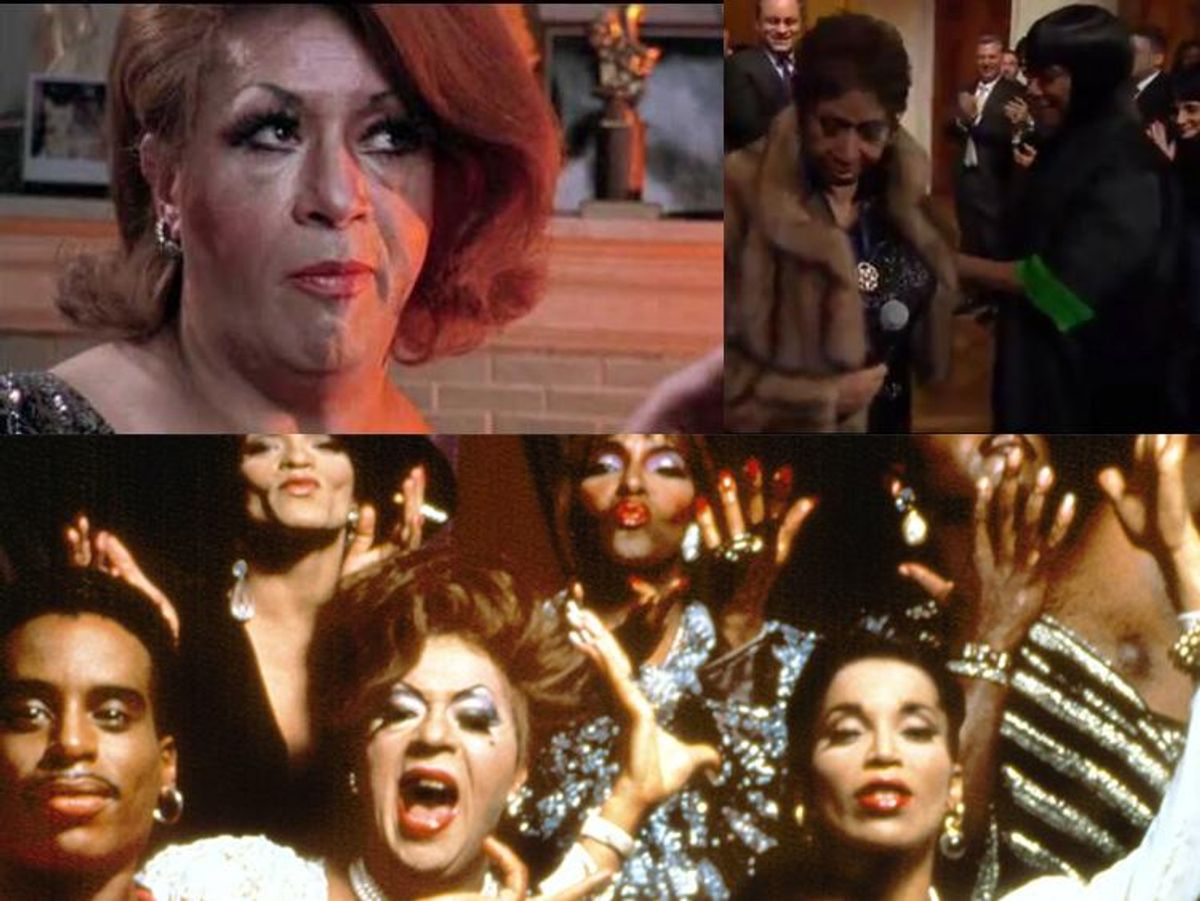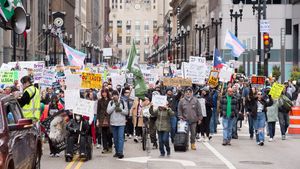Sound the alarm, release the doves, turn off the lights, whatever you need to do to prepare because The New York Times is coming for you, hunty. The Old Gray Lady put on her reading glasses and opened the library for an exploration of shade, just as activists are threatening a boycott of seminal shade parade, Paris Is Burning.






Writer Anna Holmes gave shade the in-depth analysis it's been needing with The New York Times Magazine article, "The Underground Art of the Insult." It opens with one of the shadiest moments in recent history -- and really, all history: Divagate 2014.

Now we all know Aretha saw Patti. Look at her eyes. Trailing over to that stunning bob-and-a-bang. Then immediately switching lanes because, whoops!, she's got a performance to give. The shade of it all. Aretha's complete lack of fucks or motive landed this in the Guinness World Records of Shading because, according to Holmes: "At its most refined, shade should have an element of plausible deniability, so that the shade-thrower can pretend that he or she didn't actually mean to behave with incivility, making it all the more delicious."
One could argue that Aretha was blinded by the spotlight calling her name from the stage and didn't see Patti not 10 inches from her face. Or, maybe Aretha thought Patti was a psychotic fan and didn't trust the Secret Service to tackle her on sight. The world may never know. And that, children, is shade.

Holmes cites other shadesters bringing the art form to the mainstream, including RuPaul's Drag Race, Empire's Cookie Lyon and old-school queen Madonna.



Madge is an old hand at shade and why shouldn't she be? Lady has been in, around, and stealing from the gay community for decades.
As I hope you know (for the sake of the children), Paris Is Burning is Jennie Livingston's legendary 1991 documentary that brought New York's thriving ball culture to the forefront, while sparking conversations on race, class, capitalism, apporpriation, and what it means to be American. Whence sprung Madonna's "Vogue," Drag Race, and any queen you see walking around giving you a side-eye like she knows what time it is. Hell, half of what I write is an iteration of something Pepper LaBeija or Dorian Corey snarled 25 years ago.


But that just speaks to the documentary's enduring influence. To queer people, particularly queer people of color, Paris Is Burning is tantamount to a visual Bible. Each day, it gives us our daily read. And leads us not into temptation but delivers us from haters. Amen and YAS GAWD.
In celebration of its 25th anniversary, BRIC -- a nonprofit championing contemporary art, performing arts, and community media programs that reflect Brooklyn's creativity and diversity -- planned to a screening of Paris Is Burning as part of its Celebrate Brooklyn! festival. They invited a panel that included Livingston but raised the ire of trans and queer people of color (TQPOC) and members of the ballroom community by neglecting to extend the same courtesy. As a result, a petition was launched on the behalf of those communities calling for a boycott of the BRIC event.
Among the list of grievances listed was the inclusion of gender-nonconforming musician/artist JD Samson for her "history of transphobia" (Samson has since pulled out of the event) as well as the continued exploitation of the ballroom community and the controverisal gentrification of Brooklyn:
We are also concerned that this is a pro-gentrification event since the music/acts chosen to accompany the screening were geared towards the tastes of new white middle-class residents of Brooklyn and did not culturally reflect the indigenous existing TQPOC communities of Brooklyn or within the film. [...]
This is the appropriation of our narratives for the sake of entertaining a gentrifying, majority white audience that seeks to consume us and call it paying homage.
BRIC has since issued an aplogy and the organizers have restructured the event, noting: "We have now done what we should have done when we initially planned the event: reached out to QTPOC organizations and individuals, and members of the ballroom community, to gain their insights and hear their ideas for the program."
This latest controversy is representative of the critiques leveled at Paris Is Burning since it vogued onto the cultural ballroom floor: that it was exploitative, that it was fed to and was appropriated by mainstream (read: white) America, that it left its protagonists with an uncertain future if any future at all.
"I love the movie, I watch it more than often, and I don't agree that it exploits us," Pepper LaBeija told The Times in 1993. LaBeija, however, felt "betrayed" by Livingston, adding, "They all got rich, and we got nothing."
Though that is kind of the definiton of exploitation, the film itself is not exploitative. The process behind it might have been, but, Paris Is Burning provides a perspective and gives a voice to a community that to this day remains underserved and ignored. For many in the mainstream (read: not poor, not queer, not familiar with The Struggle), the doc was the first introduction to a gay person or a trans person.


The film also simultaneously spoke to the problem of race and privilege in America, a problem that's clearly not going away in light of far too many recent events in Baltimore, Staten Island, Ferguson -- the list goes on.



That it was made by a white woman doesn't somehow discredit it. Livingston simply made it because the people she was documenting couldn't do it themselves. What was going on in community centers and rec halls up in Harlem in the '80s spread across the world, showing little gay babies everywhere the light to start their own fires. The problem, however, is these children today quoting Drag Race and making all these ballroom references when they've never seen or even heard of Paris Is Burning. It's fine to take inspiration from a culture but the key is to educate yourself on that culture and give back to it in some way. Otherwise that's called appropriation and that's where BRIC messed up. And they got clocked for it. Hopefully we can all now move on and continue our Bible studies.
Livingston, in her response to the BRICfracas, included a text from Junior LaBeija -- one of Paris Is Burning's last living survivors -- which, as usual, sums everything up perfectly:
Good Morning
The truth shall always prevail!
Pars is Burning is a documentary film about the Gay Ballroom community within Harlem. The subculture underneath and underground of the
Gay culture! It documents, explains and simplifies the freedom of expression and the right to be through the voices of participants, viewers and onlookers. The film allows diversity to be exposed and explored! What I love about my segment of the film is that I enlightened the world to understand sexual orientation is whom you go to bed with whereas gender is whom you go to bed As! Secondly, in closing I never was shady just always FIERCE!
In closing Paris Is Burning is still causing Controversy Wow! That means it is still relevant!!!
Classic!!!!!
I am still looking forward to celebrate Brooklyn!
What am I going to wear?
Jr. LaBeija
 '
'
Amen and halleluja.
[H/T Defamer]
Les Fabian Brathwaite -- wrapped up in being LaBeija.






















 '
'













































































